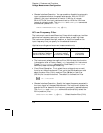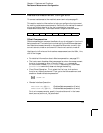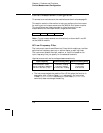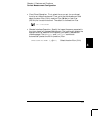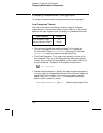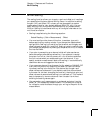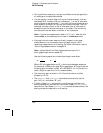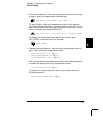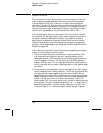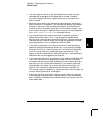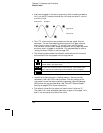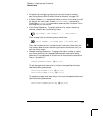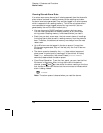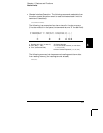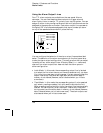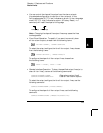
Alarm Limits
The instrument has four alarms which you can configure to alert you
when a reading exceeds specified limits on a channel during a scan.
You can assign a high limit, a low limit, or both to any configured
channel in the scan list. You can assign multiple channels to any of the
four available alarms (numbered 1 through 4). For example, you can
configure the instrument to generate an alarm on the Alarm 1 output
when a limit is exceeded on any of channels 103, 205, or 320.
You can also assign alarms to channels on the multifunction module.
For example, you can generate an alarm when a specific bit pattern or
bit pattern change is detected on a digital input channel or when a
specific count is reached on a totalizer channel. With the multifunction
module, the channels do not have to be part of the scan list to generate
an alarm. For complete details, see “Using Alarms With the Multifunction
Module” on page 130.
Alarm data can be stored in one of two locations depending on whether
a scan is running when the alarm occurs.
1. If an alarm event occurs on a channel as it is being scanned, then
that channel’s alarm status is stored in reading memory as the
readings are taken. Each reading that is outside the specified alarm
limits is logged in memory. You can store up to 50,000 readings in
memory during a scan. You can read the contents of reading memory
at any time, even during a scan. Reading memory is not cleared when
you read it.
2. As alarm events are generated, they are also logged in an alarm queue,
which is separate from reading memory. This is the only place where
non-scanned alarms get logged (alarms during a monitor, alarms
generated by the multifunction module, etc.). Up to 20 alarms can be
logged in the alarm queue. If more than 20 alarm events are generated,
they will be lost (only the first 20 alarms are saved). Even if the
alarm queue is full, the alarm status is still stored in reading memory
during a scan. The alarm queue is cleared by the *CLS (clear status)
command, when power is cycled, and by reading all of the entries.
A Factory Reset (*RST command) does not clear the alarm queue.
Chapter 4 Features and Functions
Alarm Limits
122



